SEVEN, the first novel of its kind to address female genital cutting in the Bohra community, releases this month
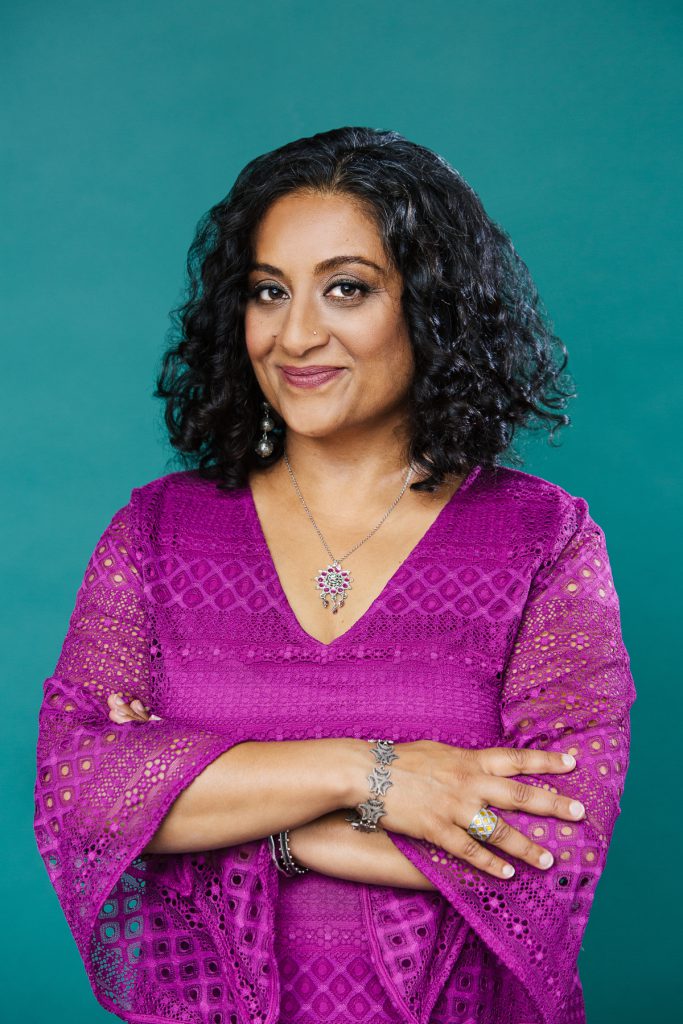
SEVEN is being released in North America this September (Sept 5 Canada/Sept 29 U.S.). The novel sensitively addresses women’s relationships, sexuality, infidelity, intergenerational violence, religion and healing sexual trauma within the context of the Dawoodi Bohra (sub-sect of Shia Islam) community. This is the first novel of its kind to address female genital cutting in the Bohra community. Farzana is an engaging speaker on all of the above themes and issues. About SEVEN: When Sharifa accompanies her husband on a marriage-saving trip to India, she thinks that she’s going to research her great-great-grandfather, a wealthy business leader and philanthropist. What captures her imagination is not his rags-to-riches story, but the mystery of his four wives, missing from the family lore. She ends up excavating much more than she imagined. 2016 is a time of unrest within her insular and conservative religious community, and there is no escaping its politics. A group of feminists is speaking out against khatna, an age-old ritual they insist is female genital cutting. Sharifa’s two favourite cousins are on opposite sides of the debate and she seeks a middle ground. As the issue heats up, Sharifa discovers an unexpected truth and is forced take a position. In an era of #MeToo, Doctor brings us a soulfully written book about inheritance and resistance. Sahiyo is giving away a copy of SEVEN to a lucky recipient! Sign up for our newsletter to find out how! About the author: Farzana Doctor is an award-winning writer, activist, and psychotherapist. She is the author of four novels: Stealing Nasreen, Six Metres of Pavement, All Inclusive, and the forthcoming Seven. Farzana was recently named one of CBC Books’ “100 Writers in Canada You Need To Know Now.” She is a founding member of WeSpeakOut. SEVEN has already received excellent advance praise: “A brave and beautiful novel.”—Judy Rebick, author of Heroes in My Head “Seven is an intimate, gutsy feminist novel that exposes the lasting, individual impacts of making women’s bodies fodder for displays of religious obeisance.”—Michelle Anne Schingler, FOREWORD Reviews “Penetrating and subtle, SEVEN deftly explores loyalty in changing times, what it means and what you give up to be a part of a community, a marriage, and friendships. Sharifa is a sympathetic everywoman; her relationships fully realized and deeply felt in this immersive, absorbing portrait.”—Eden Robinson, author of Son of a Trickster and Trickster Drift. “A defiant and engrossing novel.”—Sarah Schulman, author of Conflict is Not Abuse. “In her grand tradition, Farzana Doctor once again pushes us forward with nuanced, layered, inter-generational prose, to bring visibility to an important social issue. An urgent and passionate read.”—Vivek Shraya, author of I’m Afraid of Men and The Subtweet Sign up for Sahiyo’s newsletter to win a copy of SEVEN!
To my surprise, my friend defended khatna

By Anonymous Having decided to pursue law at the age of 15 years old, I was excited yet unprepared to know about the society that we live in. For the past four years, I have gathered enough evidence through lectures, presentations, and discussions over coffee about the horrors of which any society is capable. One such day one of my professors decided to speak about female genital mutilation/cutting (FGM/C) and asked two of my peers to give a presentation on it. The projector was switched on, lights were switched off, and my two peers took center stage to introduce the class to the topic. At the end of the presentation in a class where several hands routinely raise eager to question presenters, there was pin-drop silence. The professor smiled at the horrid, silent expressions of my classmates and broke the silence to facilitate a discussion. Gradually, all of us formed a consensus that FGM/C is harmful and needs to stop. After class, I went home and started researching the practice and ended up watching a documentary, The Cut: Exploring FGM by an Al Jazeera correspondent. I read various articles where I learned FGM/C was practiced widely among the Dawoodi Bohra community in India, and this practice was known as khatna. My heart sank as I realized that a very close friend by the virtue of being from the community must have undergone FGM/C. As a concerned friend, but with pre-conceived notions and as a judgmental being, I went on to tell my friend that I would always be there to support her through the injustice inflicted upon her. To my surprise, (but should have seen it coming) my friend defended it, stating the various reasons that she had been fed through the years of why it was important for girls to undergo it in the Bohra community. I was shattered. However, I tried not to force my opinions about the practice on her. While speaking to a few more (girls and boys) I concluded that the reason behind the practice not being spoken about is because it mainly revolves around female sexuality and religion. The reason that men/boys in the Bohra community did not talk about it or oppose it was that they thought it’s a girl’s issue; whereas the girls who went through it might have felt the need to defend it. And to speak of it publicly, would mean that they would be betraying their religion, especially if they talk about it to an outsider, a Jain like myself. Gradually, I started reading stories about FGM/C through initiatives by organizations such as Sahiyo. Fortunately, it made me realize that as an outsider to the community, it is easy for me to be outraged and criticize any practice which is detrimental to the well-being of girls and women. However, when one grows up with the practice being justified, it takes a lot more than common sense to defy and disobey the practice that has been ingrained in the community for generations Now my friend has condemned the practice and shared her plight due to khatna, which is when I decided to write my dissertation on harmful practices like FGM/C, where women need to be uplifted without antagonizing the communities which uphold these practices.
Rejection of khatna must be a step in the liberation of Bohra women
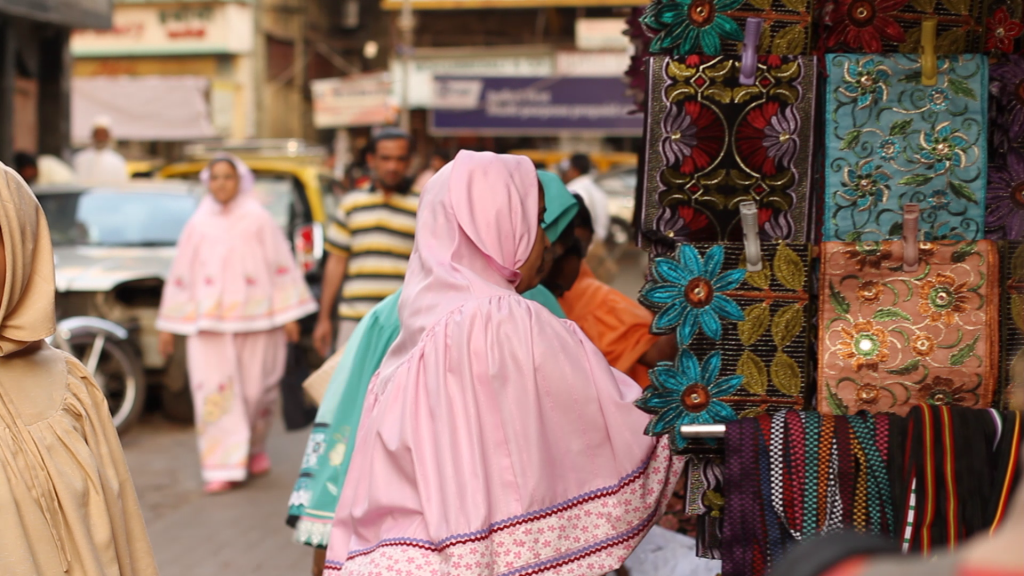
By Zarina Patel Khatna, or female genital mutilation/cutting (FGM/C) within the Dawoodi Bohra community, is not a distinct or unique ritual. It has a context and it is important that Bohra women (and men) understand that context if they are to free themselves holistically, not only from the ritual itself, but from all that promotes it. Khatna is an imposition of a patriarchal system, a male-controlled system, that seeks to assign a gendered role or designated place for women and imposes rules and regulations to maintain these assigned roles. For women, that role is strictly within the family unit where her duty is first and foremost that of caring for her family, especially the husband or parents; giving birth, including ensuring the survival of humanity; nurturing the progeny; and upholding and promoting this culture and these customs which are largely defined by the patriarchs. No boy child has his destiny mapped out at birth within the Bohra community, but the idea of a girl child choosing and planning her destiny is considered as entirely secondary and trivial to her so-called God-given role. In this era of the internet and women’s liberation globally, it has seemingly become even more imperative for the patriarchs to keep their women (who, of course, they may consider as their property) in their place. Nothing works better than religious persuasion, but it so happens that nowhere in the Holy Quran is khatna mentioned, let alone made mandatory. So the patriarchs have concocted a variety of restrictions: women’s dress code is ordained for them; the baggy and unsightly rida is designed to make them feel ashamed of their bodies and to limit their movements; if women must work outside the home, it has to be in family circles or at most in a Bohra environment; if widowed, she must observe total seclusion for four months; associating or travelling with strangers is frowned upon, and so on. Khatna confers absolutely no benefit, medical or moral, to the girls who are cut. It can be traumatic with long-lasting effects both physical and psychological. It is one more such tradition, which at a very young age instills into the girl child that she is tainted and impure, and hence, it is normal for her to be violated and controlled. Is it surprising then that as adults, most Bohra women meekly accept the various restrictions placed on them. But women are the greatest defenders of the practice, we are told. True, very true – and some of those women are doctors and the like, educated, so to speak. Sahiyo has done, and is doing sterling work in exposing the harmful practice of khatna, and encouraging opposition to it. The rejection of khatna must be a step in the liberation of Bohra women.
Part II–Medicalising khatna within the Bohra community: A Struggle of Tradition and Modernity

By Fatema Kakal (This is Part II in a series about female genital cutting within the Bohra community. Read Part I here.) While religion and religious leaders, along with culture and tradition can be drivers of female genital mutilation/cutting (FGM/C), law can play an additional critical role in disincentivizing khatna. The arrests in the U.S. and Australia due to the medicalisation of FGM/C, led to the reiteration of laws in countries that prohibited FGM/C. Laws in many countries around the world critique FGM/C as a human rights violation and child abuse. While some consider these laws to be racist, this leads to a feeling of marginalization and alienation due to the attack on traditional and cultural value systems. People became more conscious of the laws, and began reconsidering khatna, because of the risks involved. These laws helped initiate dialogue and discourse. The Bohras are a fairly progressive and modern community, where traditions are not separate from their modernity, but play a crucial role in consolidating their Bohra identity. Continuing khatna defies Western notions of modernity and embraces tradition. Instead of abandoning tradition, the Bohras are renegotiating the traditional practice and embrace modernity through medicalising khatna. Medicalisation is a tool to modernize and legitimize khatna, but also serves as a technique for social control. By supporting medicalisation, validated by modernity, and establishing khatna as a safe and religious practice, the clergy is reinventing and perpetuating khatna as a traditional practice, responding to external pressures that threatened to marginalize or alienate the Bohras. The clergy is thus reiterating and reinforcing Bohra identity as being one of modernity and tradition. Thus, khatna was no longer taboo, and a growing discourse has led to people taking increasingly different positions, and making more conscious decisions about continuing the practice. While mothers and women of the family used to be primary decision-makers of continuing khatna for the daughters of the family, fathers are increasingly involved in making the decision. It is no longer an extremely hidden practice, and parents do research before making the decision whether or not to cut their daughters. While some people follow mandates by religious leaders, others find it important to follow the law. People are conscious of the potential harm. For the devout, tradition must be followed, but by ensuring that harm is minimized. They choose to visit medical professions for khatna. For others, the risks of khatna outweigh its religious importance, and they have decided to abandon the practice. For others, consent is crucial, and believe khatna requires a girl’s consent. Since children are incapable of giving informed consent, people believe their daughters can choose to undergo the procedure as an adult, thereby making an informed decision. Thus, the religious clergy’s pastoral power plays an important role in influencing people’s decision to continue khatna. Medicalisation of FGM/C can help negotiate embracing tradition and modernity. However, law also plays an important role in helping end the practice. The growing discourse around the practice has led to people making informed, conscious decisions about following khatna. FGM/C is conceptualized as a health and human rights issue, and a children’s rights issue, which is universal. Thus, efforts against FGM/C should be focused on balancing universalization of children’s rights, human rights, and multiculturalism. Additionally, law plays a crucial role, because legislation can provide a universal stance against the practice, which can be used as a strong justification against it. Thus, community-wide change is required for individual families to abandon FGM/C, through education and activism from within the community, backed by law.
Sri Lanka’s first survey on FGM/C: Survivors need space to talk and access to medical care

By Jumana S. “It should not be up to the elders to stamp the body of a girl child at the age of seven, (a process that is irreversible irrespective of the extent of damage), and decide what her religious convictions should be.” – Jamila, Dawoodi Bohra survivor of FGC, Colombo This fundamental right that every thinking individual commands is articulated by a survivor of female genital cutting (FGC) in a first of its kind report for the country titled, “Towards Understanding Female Genital Cutting in Sri Lanka.” The report, published by the Family Planning Association of Sri Lanka, is the very first research study detailing the status of FGC in the country. It highlights the absence of dialogue, absence of awareness of the issue among medical practitioners, and also the unique political situation in the country that makes public discussion on the issue susceptible to ethnic controversy. Released in December 2019, this detailed study interviewed 26 survivors with three main objectives: to understand the practice of FGC from the perspective of survivors; to interpret the practice in relation to their health, sexual pleasure, bodily integrity and relationship with family, community and faith; and to engage medical practitioners to help with solutions with the findings of the first two objectives. Amongst the many shocking findings of the study, what overwhelms is the absolute absence of dialogue on the subject until about three years ago in the country. Hence, not only the survivors do not have a recourse for psychological counselling for their personal trauma, but the medical fraternity is also not equipped to deal with complications arising due because of it in sexual health and childbirth. “Medical professionals were not aware of the practice until recently, and in the belief that it does not take place, had not looked for signs of it and it did not form part of routine examinations that are usually centered on reproductive concerns. Further that it may be difficult to observe, most doctors had not received formal training on the practice in Sri Lanka,” the report states. As for the wider dialogue and understanding of the issue, the report notes that, “It is in the last few years – from 2016 onwards – that the practice of female genital cutting has surfaced in public dialogue in Sri Lanka, including in the media. A few women, primarily from the Dawoodi Bohra Muslim community, came forward to speak about their experiences and ask the state for a response to stop this practice.” However, what preceded this, as recently as 2008, was a circular by the All Ceylon Jamiyyathul Ulama (ACJU) of Sri Lanka, that had issued a fatwa on ‘female circumcision’ in response to a query from a member of the public, saying it is obligatory and recommended, citing religious teachings as well as the view that circumcision is important to maintain cleanliness of the genitals and ‘for enjoyment in family life’ (ACJU, 2008). In the consultation, 23 out of 26 survivors (88%) said their influencer was a woman with 17 of them claiming it was their mother. The justification for the cutting given by the respondents were that it is perceived as a religious requirement; a means of establishing ‘Muslim identity’; for controling women’s sexual feelings; medically beneficial; a customary ritual; for improving sexual partners’ interest; and for improving sexual experience of the woman. The consultations revealed a notable trend of very little conviction and understanding of why the practice was followed. The reasons were not always strongly held and the justifications often relied on the interpretation of theological positions. Based on consultations, the researchers came up with six observations. The key is the absence of space for survivors to reflect and talk. “Women need spaces, conversation starters, information and solidarity to navigate the complexities that surfaced,” the report claims. Two critical observations are about the absence of formal training on the practice and the reluctance of medical professionals to engage. “FGC was not part of the medical training received in Sri Lanka,” as noted in the observations. “All medical professionals in the consultations stated they had not received training on the issue.” Moreover, explaining the reluctance of the medical fraternity in engaging with the issue, the report observed, “Medical professionals expressed a reluctance to speak or engage publicly on the practice for the reason that such measures may be misconstrued as measures motivated by religious intolerance targeting a minority community. It spoke to the sense that the political context was not favourable to the Muslim community and there were strong possibilities that disruptive elements would create opportunity for mischief causing victimisation of Muslims, and drawing medical professionals and institutions into political conflicts.” A unique observation that comes out is the context of the dialogue in the incumbent political atmosphere in the country. The report underlines this at outset, as well as in the conclusion, that while addressing the issue, one needs to be “sensitive to the local context of intolerance and possible victimisation that public discussion of the issue may lead to.” The report, in its final recommendations, urges for “a non-judgmental and non-discriminatory approach for working on FGC in Sri Lanka.” Another recommendation that stands out is its insistence on understanding and addressing concerns raised by women of the Dawoodi Bohra community, “as the experiences of Dawoodi Bohra women of FGC in this consultation appears to be of a more severe form than that practiced by others in Sri Lanka.”
Khatna within the Bohra community: A Struggle of Tradition and Modernity

By Fatema Kakal (This is Part I in a series about female genital cutting within the Bohra community. Read Part II here) The Bohra Muslims, who have the reputation of being modern and progressive, secretly practice khatna, or female genital mutilation/cutting (FGM/C) within India, as well as in other parts of the world. I learned about this over dinner with my family when I was 17. A woman who went by the pseudonym of Tasleem had recently filed the first public petition asking the Syedna (High Priest/religious leader of the Bohra community) to stop practicing khatna. While it shocked me, it also left me intrigued, wondering why this community continues such a harmful practice. A few years later, as I was pursuing my postgraduate degree, I had the opportunity to answer the questions that my 17-year-old self had. For my Masters dissertation, I decided to use a new lens to understand the community better, and get a deeper insight into what could be the factors influencing the Bohras to continue khatna. As I worked on my research, I read about FGM/C – a lot. I also read about the Bohra community from an ethnographic lens. I reviewed literature, debates and discourses, narratives of survivors, and conducted interviews with activists working to end FGM/C (from Sahiyo and other organisations). I used French social theorist Michel Foucault’s concepts of sexuality, biopower and pastoral power to understand FGM/C. Religion and religious power can often be political, and can be woven through various forms, like the sensual, corporeal and the imaginary. Religious leaders are crucial here, who are defined by their status within religion. Thus, religious leaders have pastoral power where they lead, supervise and guide people. Pastoral power operates through the body, forming a locus for biopower, a form of control over people’s bodies. Religion uses sexuality as a mechanism for control, discipline and policing bodies. FGM/C then, is a practice used by religious leaders to control women and children’s bodies and sexuality. I used Tammary Esho’s framework of FGM/C as a socio-cultural-symbolic nexus. Esho has conduced extensive research on FGM/C and sexual and reproductive health and rights. It is a culturally mediated process of socialization, that transfuses gendered identity. Khatna is a cultural practice passed down through generations to socialize girls into the community. The pain felt during the cutting is considered a rite of passage and is symbolic of fertility and womanhood. It is meant to define a woman and her femininity, and her identity as a Bohra woman. To understand how these concepts actually applied to khatna and the Bohra community, I analysed narratives of survivors collected and shared by Sahiyo and We Speak Out in their reports, and Goswami’s documentary A Pinch of Skin, I found a few overarching themes within their stories. Khatna was seen as a religious and traditional practice, and was considered to be a tool to control women’s sexuality, and maintain morality. Most of the survivors’ experiences involved traditional cutting by a dai or a midwife, in unhygienic conditions; where mothers and other women in the family played a vital role. It was a highly secretive and taboo practice, but normalized and obligatory, and passed down through generations. Many women claimed to feel anger and shame, remembered it being painful, and asserted it affected their sexual lives, and crucially, being a traumatic event in their lives. I interviewed activists as key informants who highlighted that the silence around khatna was breaking – with Tasleem’s petition in 2012, and the arrests in the United States and Australia. Religious leaders also began addressing it through sermons and letters issued to community members. The public interest litigation in the Indian Supreme Court in 2017 and the growing anti-FGM/C movement rising from within the community were important for people to hear different voices around khatna. This in turn, led to a shift in the rationale for the practice. While it was earlier believed that it controls women’s sexuality, the Bohra clergy was increasingly scrutinized for controlling women’s bodies. The clergy changed the justification behind the practice, by claiming it is a religious practice and a marker of Bohra identity. The growing anti-khatna movement was also considered an attack by Westernization. Thus, continuing khatna became a statement defying Western notions of appropriate religious customs and traditions. The Bohra clergy encourages people to visit medical professionals to have their daughters cut safely, promoting medicalisation. Medical facilities are increasingly accessible for people in the Bohra community, especially in big cities, who claim to do the cutting in a safer, hygienic way, thus perceived to be potentially minimizing risk and trauma. The Bohra clergy is an important agent in the continuation of khatna. People’s lives are heavily influenced by the Syedna and the clergy due to their pastoral power over the community. They are deeply involved in people’s lives, and their pastoral power has political power. Khatna is a form of control over girls’ bodies and sexuality, which is considered aberrant. Thus, the clergy enforces biopower through khatna, to ensure women uphold values of fidelity and morality. People in the community however, look at khatna at a socio-cultural-symbolic nexus. Khatna is significant for forming a girl’s identity as a Bohra woman, and has cultural and symbolic significance as a rite of passage. Women are bearers of culture, and it is a tradition passed down through generations. Thus, khatna continues to be practiced in the Bohra community, due to social, cultural and religious norms of womanhood, purity and sexuality. The clergy has significant influence over the community and the family. Law can play a crucial role in discouraging people from continuing khatna. Thus, in order to end the practice, it is important to engage the various stakeholders in the community who protect the practice, especially women who are often primary decision-makers for children to undergo khatna.
The movement to end FGM/C: Looking back at the 2010s and looking forward in 2020
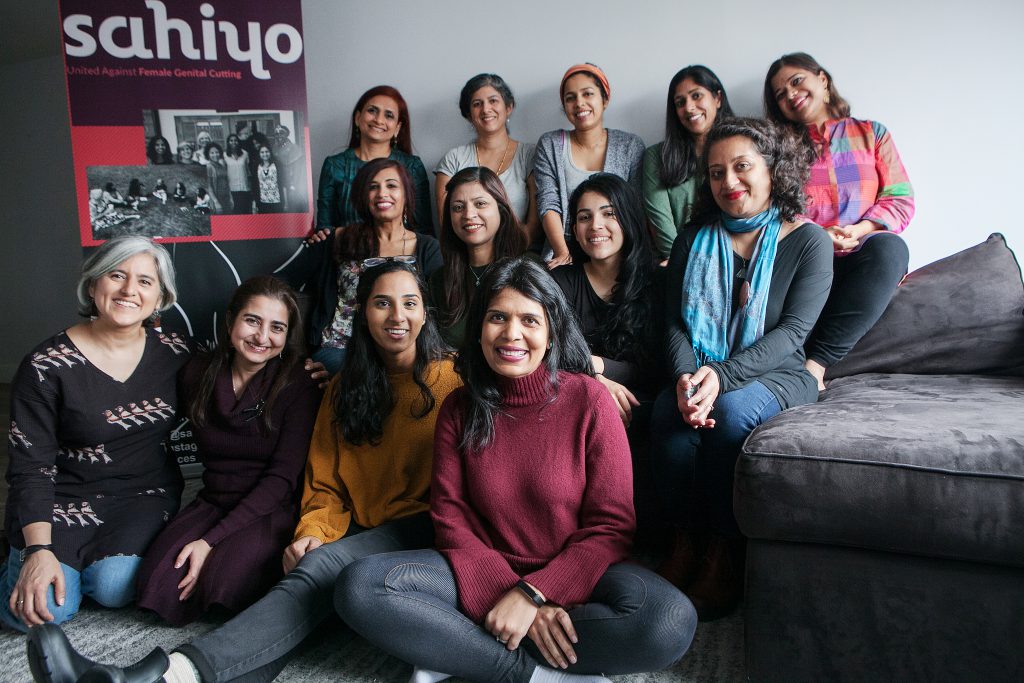
By Sahiyo 2020 is here, and we at Sahiyo are excited. 2020 brings with it not just a new year, but the dawn of a new decade of hope and hard work for our global movement to end female genital cutting (FGC). This is the decade in which we must give it our all, because we have pledged to achieve the United Nations Sustainable Development Goal of eliminating Female Genital Mutilation/Cutting by 2030. As we look forward to the 2020s, we cannot help but look back at the 2010s for inspiration. The last decade has been game-changing, not just for Sahiyo or the movement against FGC among the Dawoodi Bohras, but for the anti-FGC movement in Asia as a whole. At the start of 2010, FGC was still considered an “African” problem, and Asian countries were barely on the map of the places where FGC is prevalent. Today, we know that FGC is truly and disturbingly a global phenomenon putting 3.9 million girls at risk every year, as you can see in this map created by Orchid Project: Nearly half the countries on the map above are not yet included in the UN’s official list of 30 countries where 200 million women and girls have undergone FGC. In the 2020s, let us work to ensure that this information gap is bridged, so that Asian survivors of FGC are officially recognised. In fact, you can start now by signing Sahiyo’s petition asking the global community to invest in research on FGC prevalence and advocacy and support services to end FGC in Asian countries. But first, let’s take a look back at the biggest milestones of the 2010s from Sahiyo’s perspective. The birth of Sahiyo: In late 2011, ‘Tasleem’, an anonymous Dawoodi Bohra woman from India, started a Change.org petition asking the Syedna, the religious leader of the Dawoodi Bohra sect, to call for an end to FGC in the community. Although there had been scattered attempts to call out the secretive practice of FGC among the Bohras in the 1980s and ‘90s, they drew limited attention and the practice continued to be shrouded in silence. Tasleem’s petition, however, received nearly 3,500 signatures, triggered a spate of media reports on FGC in India, and inspired a few Bohra women, like Aarefa Johari and Farida Dariwala, to speak out publicly about their experiences of FGC. The media reports on FGC at the time also inspired Sahiyo co-founder Priya Goswami to make A Pinch of Skin, the first documentary film on FGC among Dawoodi Bohras in India. As Goswami’s film won the 2013 National Award for the best documentary in India, the taboo topic of FGC remained alive in the media, sparking private conversations between like-minded Bohra women all over the world who were keen to see an end to FGC. In late 2014, five of those women banded together to create a formal platform that would work to end FGC among Bohras and Asian communities at a transnational level. That platform — Sahiyo — was eventually founded in mid-2015. Breaking the silence, once and for all: In 2015, the private conversations on FGC among Bohras also burst into the public sphere with the launch of WeSpeakOut (known as Speak Out on FGM at the time). WeSpeakOut started as a private women’s WhatsApp group spearheaded by Masooma Ranalvi. In October 2015, the group launched a Change.org petition addressed to the Indian government, seeking a legal ban on FGC in India. Seventeen Bohra women publicly put their name to the petition, and the response was huge and immediate: media all over India began writing about FGC among Bohras, community leaders were forced to respond, and the silence about FGC among community members was broken for good. More than 200,000 people have signed the petition so far. From 2015 to 2019, we have watched the movement against FGC snowball into a global force that communities have not been able to ignore. There are now dozens of Bohra women fearlessly speaking out about their FGC experiences, signing up as Sahiyo volunteers, attending our events and pledging not to cut their daughters. Women and men have faced backlash from their families and communities for speaking out, but the movement has only grown stronger. Research and investigations: In February 2017, Sahiyo released the results of the first-ever research study on FGC among Bohras: an online, exploratory survey that found an 80% prevalence rate of FGC among Bohra women respondents. Among those who were cut, 98% women reported feeling pain when they underwent the ritual. Interestingly, 81% of respondents did not want FGC to continue in the community. In 2017, a Sahiyo investigation also revealed that FGC is being practiced by some communities in the South Indian state of Kerala, leading to furore in the region. Before this, it was believed that the Bohras are the only community in India practicing FGC. In 2018, WeSpeakOut published a seminal field study on FGC among Indian Bohras. The study found FGC prevalent among 75% of the daughters of the respondents. At least 33% of the respondents who were cut reported that FGC negatively impacted their sexual lives. More research on the FGC in Asian communities is the need of the hour, and we are aware of several studies that are currently underway in various parts of Asia. Continuous research can help us better understand not only the prevalence and impact of FGC on women and girls, but also the needs of survivors and trends towards abandonment of the practice. Developments on the legal front: The 2010s were a landmark decade for FGC on the legal front, particularly for the Dawoodi Bohra community. Australia: In 2015, three Bohras — a mother, a nurse and a community leader — were convicted for performing FGC on two minor girls in Australia. This was Australia’s first case under its 1997 law banning FGC. However, the legal ups and downs did not end with the conviction in 2015. In 2018, an appeals court overturned the convictions
એક સાઈકોથેરૅપિસ્ટ તરીકે, હું ક્યારેય ખતનાની ભલામણ નહિં કરું

(This article was first published in English on December 10, 2016. Read the English version here.) લેખક : અનામી ઉંમર : 36 વર્ષ દેશ : ભારત હું એક માનસિક આરોગ્ય ચિકિત્સક છું અને છેલ્લા 16 વર્ષોથી હું તેનું કાઉન્સેલિંગ અને થેરાપી આપી રહી છું. મારા ઘરનાં લોકો મારી એક કઝિનની સેરિમનિ વિષે બોલતા હતા ત્યારે અનાયાસે જ મને ‘ખતના’(ટાઈપ 1 એફ.જી.એમ.) વિષે જાણવા મળ્યું. હું વધારે માહિતી મેળવવા માંગતી હતી. મને સમજાયું નહિં કે હું પણ તે પ્રક્રિયા હેઠળથી પસાર થઈ હતી. મને વધારે કંઈ યાદ નથી, બસ આટલું કે મને બળતરા થતી હતી અને ત્યારબાદ મારી માં અને નાની દ્વારા તપાસવામાં આવી રહી હતી. તે એક હરામની બોટી હતી જેને મારા શરીરમાંથી કાઢી નાખવામાં આવી હોવાથી મારે તે વિષે ક્યારેય વાત કરવી જોઈએ નહિં તેવા વાતાવરણમાં હું મોટી થઈ. મને કહેવામાં આવ્યું હતુ કે હવે તુ શુદ્ધ થઈ ગઈ છે. હું મોટી થઈ તેમ મેં સાઈકૉલોજીનો અભ્યાસ કર્યો, હું એફ.જી.એમ. વિષેનો એક આર્ટિકલ વાંચતી હતી ત્યારે અચાનક જ મને સમજાય ગયું કે તે દિવસે મારી સાથે શું બન્યું હતુ. મને ધક્કો લાગ્યો પરંતુ, તેને સ્વીકારવા સિવાય મારી પાસે કોઈ વિકલ્પ નહોતો કારણ કે જે કંઈ બન્યું તેની કોઈ અસર સમજાઈ નહોતી – મારા પ્રગતિશિલ માં-બાપને પણ નહિં. મારૂં જીવન અન્ય છોકરીઓની જેમ આગળ વધવા લાગ્યું. મારૂં લગ્ન જીવન, ખાસ કરીને સેક્સ પર તેની કોઈ અસર થઈ નહિં. મારૂં સેક્સ્યુઅલ જીવન અને ઑર્ગેઝમ્સ પણ સંતોષપૂર્ણ હતા અને મેં મહેસુસ કર્યું કે મારા પર ખતનાનીં કોઈ મોટી અસર થઈ નહોતી અથવા સાત વર્ષની ઉંમરે હું જે પ્રક્રિયા હેઠળથી પસાર થઈ તેનાં આઘાતનો સામનો કરવા મેં એ બાબતને એકદમ દબાવી દીધી હતી. જો કે, મને યાદ છે કે બાળકનાં જન્મ સમયે મારે એપિસિઓટોમી પ્રક્રિયા કરાવવી પડી હતી. UNFPA દ્વારા કરવામાં આવેલ એક સ્ટડી અનુસાર, એક સામાન્ય બૈરીની સરખામણીએ જે બૈરી પર જેનિટલ કટિંગની પ્રક્રિયા કરવામાં આવી હોય તેને સિઝેઅરિયન સેક્શન અને એપિસિઓટોમી ની વધારે જરૂર પડે છે અને બાળકનાં જન્મ પછી વધારે સમય હૉસ્પિટલમાં રહેવું પડે છે. આ વર્ષની શરૂઆતમાં પીઅર સુપરવિઝનમાં, મારી સાથે જે કંઈ બન્યું તેની પ્રક્રિયાને મેં ધીરે-ધીરે સમજી અને તેને જીવનનાં એક ભાગ રૂપે લીધી. મને એ બાબત પાછળથી સમજાઈ કે એફ.જી.એમ. ની અસરો થાય છે. હકીકતમાં તે આત્માને જખમો આપે છે અને આપણને આશ્ચર્ય થાય કે શું આ પ્રક્રિયા કરવી ખરેખર જરૂરી છે. ખતના પ્રક્રિયા લાંબા સમય સુધી માનસિક તણાવ આપી શકે છે. કુટુંબનાં સભ્યો દ્વારા ભરોસો તોડવાની લાગણીને કારણે તે બચ્ચાઓનાં વર્તનમાં ગરબડ પેદા કરી શકે છે. મોટી છોકરીઓ પણ બેચેની અને તણાવ મહેસુસ કરી શકે છે. જે આવી બધી બાબતો સમજે છે, તેવા એક મનોચિકિત્સક તરીકે શું હું ખતનાની ભલામણ કરીશ? ના, હું ભલામણ નહિં કરું કારણ કે, મને લાગે છે કે તેનો મુખ્ય હેતુ બૈરીઓની સેક્સ્યુઆલિટી પર નિયંત્રણ લાવવાનો છે. હું તેની વ્યાખ્યા લિંગ આધારીત હિંસા રૂપે કરીશ.
मेरी अनुमति के बिना मेरे सबसे गुप्त अंगों को काटा गया
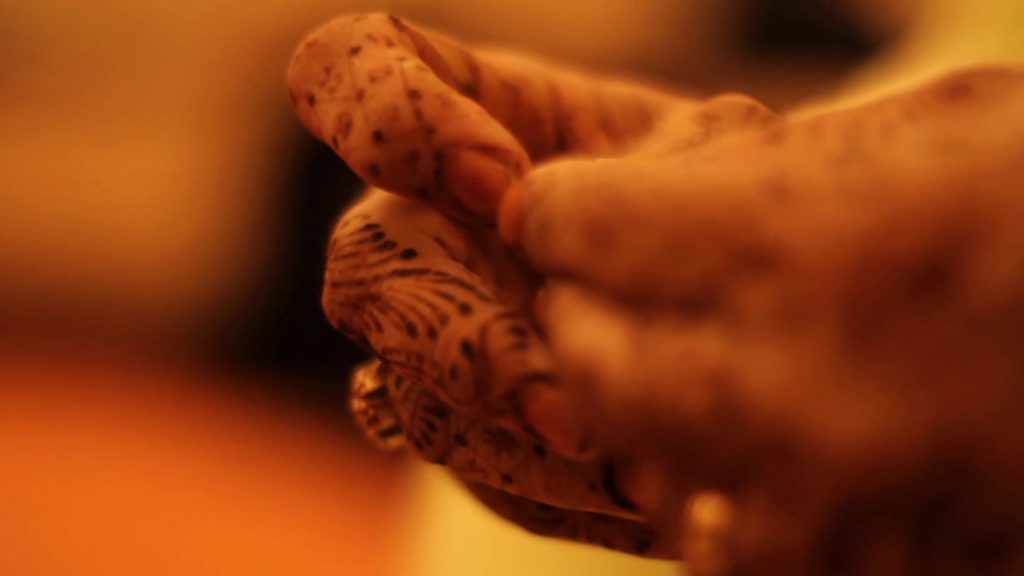
(This article was originally published in English on November 5, 2016. Read the English version here.) उम्र: 64 देश: संयुक्त राज्य अमेरिका महिला जननांग विकृति या FGM के खिलाफ खड़े होने का समय आ गया है। यह लंबे समय से बाकी है। यह तब भी सही नहीं था जब मेरी माँ इससे गुज़री, यह तब भी सही नहीं था जब मैं इससे गुज़री और यह तब भी सही नहीं था जब मैंने अपनी बेटी के साथ यह होने दिया (मेरे माता-पिता के दबाव में)। जिस दिन भारत में मेरे साथ एफजीएम किया गया था, मुझे उस दिन की याद है। मैं लगभग छह या सात साल की थी। मेरे भाई, जो मुझसे उम्र में बड़ा था, उसको एक दोस्त के घर पर खेलने के लिए दूर भेज दिया गया था एक महिला, जिसे मैंने पहले कभी नहीं देखा था, वह आयी और मुझे मेरे माता-पिता के बेडरूम में ले जाया गया जहां एफजीएम किया गया था। मुझे लगता है कि उस घटना और उस दिन की असहज स्मृति को मैंने दबा दिया है – बस उस महिला और मुझे नीचे लिटाए रखने वाली मेरी माँ की तस्वीर को छोड़कर। मुझे याद नहीं है कि खतना के पीछे का कौनसा कारण मुझे बताया गया था। लेकिन मुझे याद है कि मेरी अनुमति के बिना मेरे शरीर के सबसे गुप्त अंग के साथ जो किया गया था, उससे मैं बहुत नाराज़ थी। यह मेरे जिस्म पर अतिक्रमण था। सबसे अधिक, मुझे इस बात पर नाराजगी है कि जिस व्यक्ति पर मैंने उस छोटी उम्र में जीवन में सबसे अधिक भरोसा किया था, उनहोंने मेरे साथ ऐसा होने दिया। हो सकता है, इसीलिए, मेरा एक हिस्सा है जो मेरी माँ को माफ नहीं कर सकता है और मुझे आश्चर्य है कि मेरी बेटी ने मुझे उसी काम को करने के लिए माफ कर दिया है। एफजीएम को सही दिखाने के लिए इसे धर्म के लिबास में ढका जा रहा है। पर जल्द ही साहियो जैसे संगठन इस क्रूर प्रथा को बंद कर देंगे। जब तक सैयदना एफजीएम की निंदा नहीं करते हैं, और अपनी बात अमल नहीं करते हैं, तब तक मुझे खुद को दाउदी बोहरा कहने में शर्म आएगी।
टैटू, महिला खतना और पाखंड
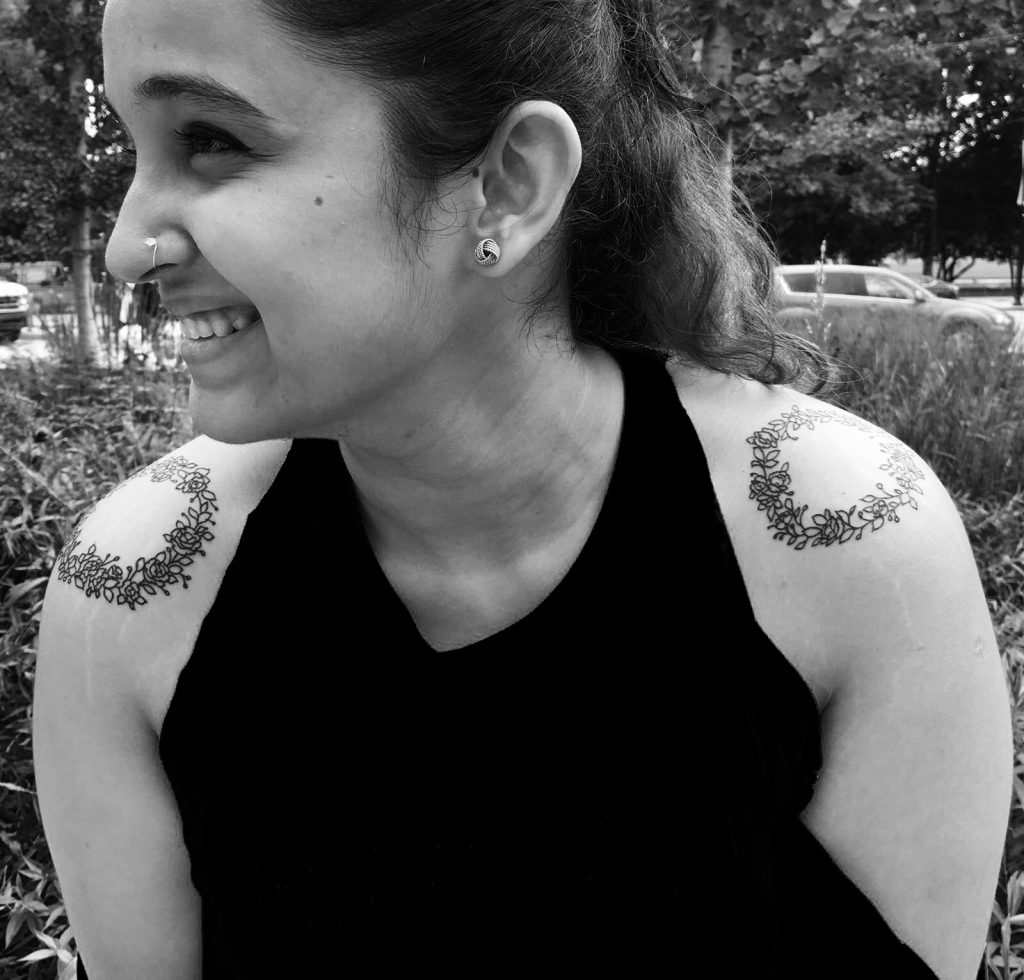
(This piece was originally published in English on November 25, 2016. Read the English version here.) अज़रा एदनवाला उम्र: 21 देश: अमेरिका / भारत कुछ समय पहले मैं साहियो नाम के एक संगठन से मुख्तलिफ हुई। उस समय तक मैंने अपने खतने के बारे में कभी सोचा नहीं था। सच कहु तो मुझे पता ही नहीं था की इसका मतलब क्या है। जब मैंने उन महिलाओं के लेखों को पढ़ा, जिनका खतना हुआ था, तब मुझे एहसास हुआ की इस भयानक परंपरा का एक शिकार मैं भी थी। मैंने तो बस इस याद को अंतर्मन में दबा दिया था, क्यूंकि मैं नहीं जानती थी की ये परंपरा कहाँ से आयी और इसका मतलब क्या है। मैं शायद 5 या 6 साल की थी। अपने परिवार के साथ छुट्टी पर थी। गुजरात में कोई इलाका था, जहाँ तक मुझे याद है। इसके अलावा और कुछ याद नहीं, सिवाय दर्द से भरे कुछ छितरे-बिटरे पलों की। मुझे एक गंदे से बाथरूम में ले जाया जाना याद है, साथ में एक पुरूष या एक महिला थीं, सफ़ेद कपड़ों में। मुझे कैंची याद है, और मुझे खून देखना याद है। मुझे रोना याद है। क्योंकि मेरे जननांगों पर एक पट्टी लगाई गई थी। मुझे याद नहीं है कि किसी ने मुझे बताया हो, कि मेरे साथ अभी यह सब क्या हुआ था या क्यों हुआ था। सब कुछ हमेशा की तरह चलता रहा, मानो कुछ घटा ही न हो। और मैंने भी उसे मान लिया, क्यूंकि मुझे यह पता ही नहीं था की मेरे शरीर के साथ क्या किया गया है। वैसे तो मेरे खतना ने न ही मेरे मन पे कोई गहरी छाप छोड़ी है, न ही मेरे जीवन जो किसी तरह बदला है। हालांकि जो चीज़ मुझे खुरेदती है वह यह है की आखिर ये शरीर मेरा है, और किसी को भी इसे बदलने का कोई भी अधिकार न तो कभी था, न है। खासकर वैसे हानिकारक बदलाव जो “जैसे चलता है, वैसे चलने दो” की सोच के साथ आएं। तीन साल पहले मैंने अपना पहला टैटू करवाया था। जब मेरे एक रिश्तेदार ने मेरे शरीर पर इस टैटू को देखा, तो उन्होंने कहा, “तुम मुस्लिम हो। और हमारा धर्म यह बताता है कि शरीर को ठीक उसी तरह अपनी कब्र में लौटना चाहिए, जैसा की वह माँ की कोक से निकला था। दूसरे शब्दों में कहा जाए, तो हमें अपने शरीर में कोई बदलाव नहीं करना चाहिए और इसे वैसे ही स्वीकार करना चाहिए जैसा की हमें अल्लाह ने दिया है। अगर ऐसा है, तो मेरे गुप्तांगों को क्यों काट दिया गया? यह कैसा पाखंड है? कोई भी धर्म सिर्फ अपने सुविधानुसार अपने नियम नहीं बना सकता। हमें यह समझना होगा की धर्म आखिर हमीं ने बनाया है, और हमें उन रीती-रिवाज़ो का पालन करना छोड़ना होगा जो परंपरा के नाम पर चलती आ रही है। हम एक आधुनिक समाज में रहते हैं, और जहां हम अभी हैं उस जगह पर हम इसलिए पहुँचे हैं क्योंकि हमने परिवर्तन को अपनाया। महिला जननांग खतना इस्लाम में एक महिला के आस्था को निर्धारित नहीं कर सकता है। मुझे यह प्रथा बड़ी छिछली लगती है, और मुझे नहीं लगता कि किसी को भी इस प्रथा का पालन करना चाहिए, विशेष रूप से छोटे बच्चों को, जिनको पता ही नहीं है कि उनके साथ क्या हो रहा है। हो सकता है की खतना का मुझपर ज़्यादा गहरा असर नहीं पड़ा है, लेकिन ऐसी बहुत सी महिलाएं है जिन पर असर हुआ है। प्रत्येक महिला को अपने शरीर पर अधिकार होना चाहिए क्योंकि ऐसे भगवन में विश्वास रखने का कोई मतलब नहीं है जो जाहिर तौर पर ऐसी भयानक और अमानवीय प्रथा का समर्थन करते हैं।
